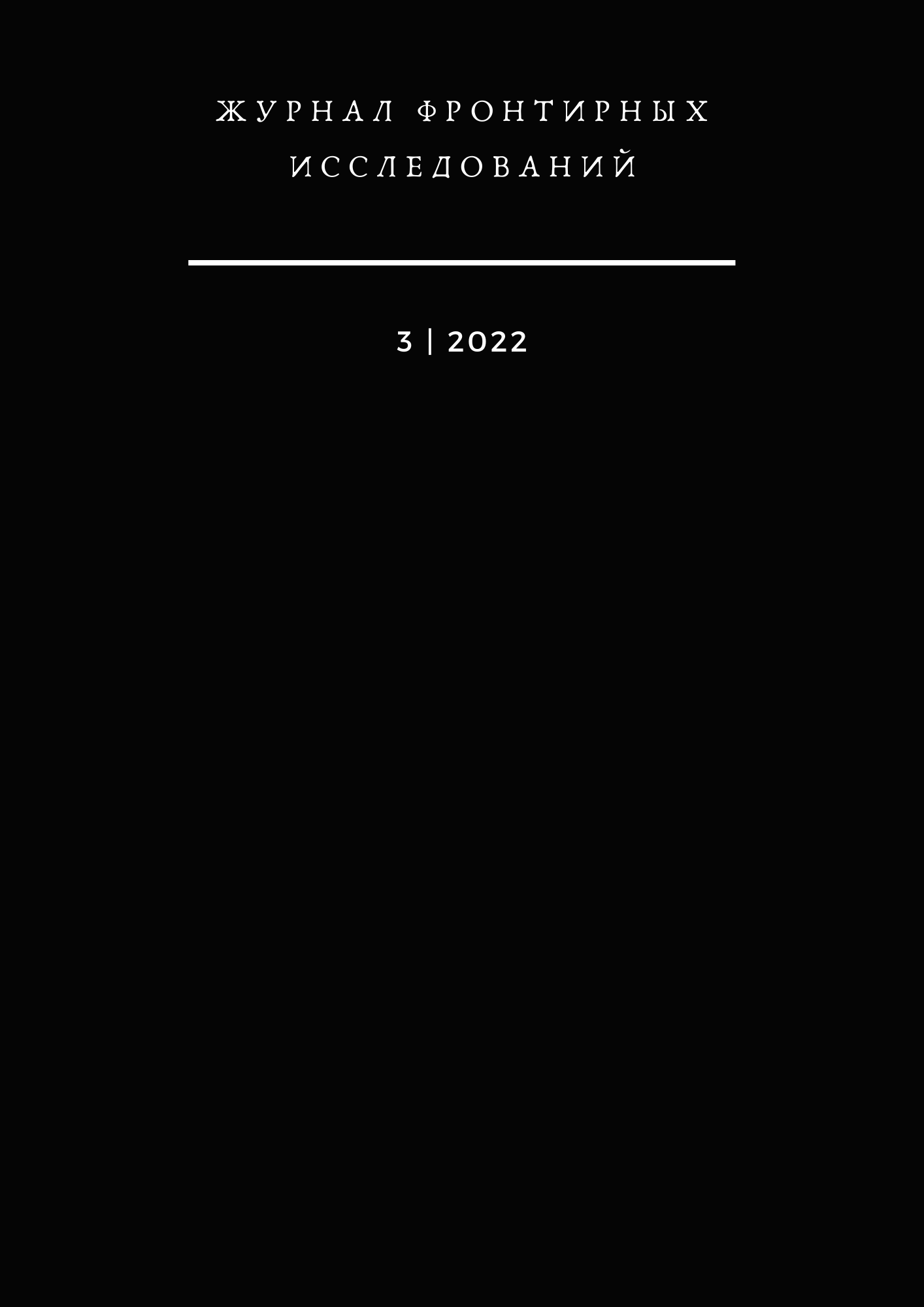Abstract
The article deals with the data of official statistics of ethnic Ukrainian population in the modern territory of the Russian Federation for the late 19th – early 21st centuries, which indicate a multiple reduction in the number of Ukrainians in Russia, the disappearance of areas of their compact residence. At present, only territories with a large bi-ethnic Russian-Ukrainian population have survived in the Russian Federation, which is primarily due to the change in the identity of the “former” Ukrainians. Most Russian researchers consider the decline in the number of Ukrainians to be a process of natural assimilation. However, studies carried out under the guidance of the author in 2020-2021 in the regions of compact residence of Ukrainians show that among the biethnors the point of view prevails, about the political nature of this assimilation caused by the repressions of the period of Stalin dictatorship, the change in the “status” of Ukrainians after the collapse of the USSR and cultural and educational policy, which does not provide the possibility of learning Ukrainian language and obtaining education, even in places densely populated by Ukrainians. More often, respondents speak about the political reasons for the “rewriting” of Ukrainians into Russians in the regions bordering Ukraine. In the Asian part of the country, opinions about the forced or natural assimilation form two numerically approximately equal groups.
References
All-Union Population Census of 1926: Vol. III. Central Black Earth Region. Srednevolzhskiy district. Nizhne-Volzhskiy district.. (1928). Central Statistical Bureau of the USSR. (In Russian).
All-Union Population Census of 1937: General Results. Collection of documents and materials. (2007). ROSSPEN. (In Russian).
All-Union Population Census of December 17, 1926: Brief summaries. Issue 4: Nationality and native language of the USSR population. (1928). Central Statistical Bureau of the USSR. (In Russian).
Censuses of the Russian Empire, the USSR, the 15 newly independent states. (n. d.). Demoscope Weekly. http://www.demoscope.ru/weekly/pril.php (In Russian).
Drozdov, K. S. (2016). Ukrainianization policy in the Central Black Earth Region, 1923-1933. Humanitarian Initiatives Center. (In Russian).
Filonovich, S. A. (2019). Istorija zaselenija Central'nogo Chernozem'ja v zone russko-ukrainskih kontaktov. Bulletin of Armavir State Pedagogical University, 1, 135–145. (In Russian).
Fursova, E. F. (2019). Problems of Ethnic and Cultural Identity of the Ukrainian Population of Western Siberia (Early 20th and Early 21st Centuries). Problems of Archaeology, Ethnography, Anthropology of Siberia and Neighboring Territories, 25, 748–753. https://doi.org/10.17746/2658-6193.2019.25.748-753 (In Russian).
Gribanova, N. S., Chernova, I. V., Lyulia, N. V., & Svidovskaya, A. S. (2017). Family and family life of the Ukrainian rural population of Western Siberia in the late 19th - 20th century. Altai State Pedagogical University. (In Russian).
Gritsenko, A. A., & Krylov, M. P. (2012). Ethno-Cultural Gradient: Regional Identity and Historical Memory in the Neighboring Regions Of Russia And Ukraine. Cultural and Humanitarian Geography, 1(2), 126–140. (In Russian).
Kabuzan, V. M. (2006). Ukrainians in the world. Nauka. (In Russian).
Khmelko, V. (2004). Linguistic and Ethnic Structure of Ukraine: Regional Peculiarities and Trends in the Years of Independence. Scientific Notes of NaUKMA, 32, 3-15. (In Ukranian).
Listova, T. A. (2014). Voronezh Ukrainians-Russian Khokhlyas. Vestnik antropologii, 2, 116–139. (In Russian).
Listova, T. A. (2018). The Impact of Borders on the Modern Ethnocultural Situation in Southwest Russia. In V. V. Zotov (Ed.), Interethnic and Interconfessional Relations in the Border Region: Status and Trends (pp. 161–171). Kursk Academy of State and Municipal Service. (In Russian).
Lyulia, N. V. (2019). Ethnic Identity of Descendants of Ukrainian Resettlers of Altai Krai during the Aggravation of Russian-Ukrainian Relations. In M. Yu. Martynova (Ed.), XIII Congress of Anthropologists and Ethnologists of Russia (p. 111). IEA RAS, KFU, Institute of History named after Sh. Sh. Marjani Institute of History, Academy of Sciences of the Republic of Tatarstan. (In Russian).
Microcensus 2015. (n. d.). Rostat. https://gks.ru/free_doc/new_site/population/demo/micro-perepis/finish/micro-perepis.html (In Russian).
Mitrofanova, I. V., & Suschii, S. Ya. (2017). The Russians in Ukraine: Geodemographic Results of the Post Soviet Period and Middle Term Prospects. Sotsiologicheskie issledovaniya, 8, 45–58. https://doi.org/10.7868/s0132162517080050 (in russian).
Proskurina, N. V. (2017). Russian-Ukrainian Symbiosis within the Territory of the Voronezh Region. Proceedings of Voronezh State University. Series: Geography. Geoecology, 4, 95–99. (In Russian).
Skorik, A. P., & Bondarev, V. A. (2013). Ukrainizacija na Juge Rossii kak nacional'no-politicheskaja kampanija: Osushhestvlenie i likvidacija (1920-e – nach. 1930-h gg.). Istorija v podrobnostjah, 10, 62–71. (In Russian).
Stepanov, V. V. (2018). Ethnocultural Diversity of Russia and the Possibility of Statistical Measurement. In V. A. Tishkov & V. V. Stepanov (Ed.), Russia's Ethnic and Religious Diversity (pp. 62–88). IEA RAS. (In Russian).
Suschii, S. Ya. (2017). The History, the Present and the Prospects for the Ukrainians of Southern Russia: Demographic Settlement Aspect. Population, 20(3), 63–74. (In Russian).

This work is licensed under a Creative Commons Attribution 4.0 International License.

